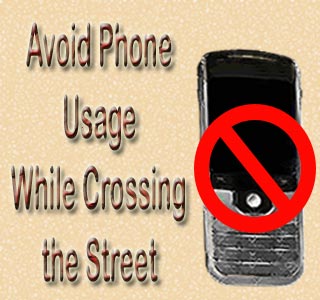
Around 77 children, aged 10-11 years old were studied for this purpose. The study investigators made use of a virtual reality software program and three screens that displayed a Birmingham-area crosswalk. There were simulated vehicles of varying sizes traveling on the virtual street. These children had to cross the street with a research assistant, six times without making use of their cell phones, and another six times while talking on their phones.
The psychologists say that, “Cell phones clearly offer convenience and safeguards to families, but they also may pose risk, particularly when children attempt to multitask while conversing on the cell phone and have reduced cognitive capacity to devote to potentially dangerous activities such as crossing streets.â€
The investigators state that all the children were very likely to behave in a risky manner, while talking on their cell phones and crossing the street, simultaneously. This was applicable to even those children who had experience of crossing the street, talking on their cell phone, and even those who were believed to be highly attentive.
It was noticed that the children who were speaking on their phones took 20 percent longer time to start crossing the street. These children were also found to be 43 percent more vulnerable to meet with an accident or have a close encounter in the virtual environment. These children were even said to look both sides 20 percent lesser times before crossing the street.
The UAB psychologists state that the same manner where vehicle drivers should avoid talking on their phone while driving, even pedestrians should try not to use their cell phones while crossing the street. They further say that a more detailed analysis is required to gauge the effect that listening to music, texting, and talking to peers may have on children while crossing the street.
Their study findings will appear in the February issue of Pediatrics.
